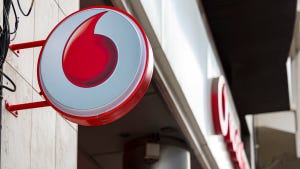Emerging connection-oriented Ethernet technology MPLS-TP is gaining traction in APAC, with AlcaLu adding to UTStarcom's early successes
December 15, 2009

In the race to secure a dominant position in the connection-oriented Ethernet world, it looks increasingly like the Provider Backbone Bridging - Traffic Engineering (PBB-TE) brigade is letting its current advantage slip away.
As carriers find particular applications, such as wireless backhaul and data center connectivity, that suit connection-oriented Ethernet's attributes -- the flexibility of packet transport combined with familiar operations, administration, and maintenance (OA&M) capabilities -- market momentum appears to be swinging in favor of MPLS-TP, an alternative to PBB-TE. (See Transport MPLS Gets a Makeover and A Guide to PBT/PBB-TE.)
Evidence of that momentum is particularly notable in Asia/Pacific. Today, for example, Alcatel-Lucent (NYSE: ALU) announced a wireless backhaul infrastructure deal with SK Telecom (Nasdaq: SKM). The vendor is supplying the Korean carrier with the scaled-down version of its 1850 Transport Service Switch that's part of its Mobile Evolution Transport Architecture (META). (See AlcaLu Targets Wireless Backhaul.)
That switch includes support for Transport MPLS (T-MPLS) -- the foundation upon which MPLS-TP has been developed -- but also "alignment with MPLS-TP" for potential future migration to that technology.
Elsewhere in the region, UTStarcom Inc. (Nasdaq: UTSI) has landed deals to provide its NetRing transport gear, which includes pre-standards support for MPLS-TP, to Japan's SoftBank Corp. , for its mobile backhaul network, and Shandong Electric Power Corp., which is building a data network. (See UTStarcom Wins in China, UTStarcom Wins at Softbank, and UTStarcom Updates NetRing.)
Missed opportunity
On paper, PBB-TE holds an advantage because it has already been standardized by the Institute of Electrical and Electronics Engineers Inc. (IEEE) , while MPLS-TP is still a work in progress at the Internet Engineering Task Force (IETF) (in conjunction with the International Telecommunication Union, Standardization Sector (ITU-T) ), with a standard set to be published due some time in 2010.
But that's not how it's worked out. While PBB-TE still has a number of supporters, notably Ciena Corp. (NYSE: CIEN), Ethos Networks Ltd. , Extreme Networks Inc. (Nasdaq: EXTR), the metro Ethernet networks division of Nortel Networks Ltd. (soon to be Ciena), and Tejas Networks India Ltd. , there has been little in the way of deployments since the technology attained standard status in June this year. (See Extreme Lathers Up Soapstone Plans, Ethos Demos PBB-TE, PBB-TE = Standard, IEEE Ratifies PBB-TE, Tejas Launches PBT Platform, India's Tejas Joins PBT Club, and Extreme Launches PBT.)
In addition, some of the technology's supporters have been falling by the wayside or withdrawing their support, while Nortel has been sidetracked by its asset sales, bankruptcy proceedings, and greater focus on establishing a lead in 100 Gbit/s optical transport. (See Verizon Switches On 100G in Europe, Ciena Beats NSN to Buy Nortel's MEN, Nortel: What's Left on the Shelf?, Gridpoint Going Off-Grid?, and Nokia Siemens Gets Ruthless on R&D Focus.)
Ciena, it should be noted, did score a PBB-TE deal in June this year, and has seen demand for the technology in the wireless backhaul market. (See Mzima Deploys Ciena and Sprint Joins PBT Club.)
But like a number of other vendors, such as Fujitsu Ltd. (Tokyo: 6702; London: FUJ; OTC: FJTSY) and Tellabs Inc. (Nasdaq: TLAB; Frankfurt: BTLA), Ciena isn't only backing one horse, as it sees demand for both connection-oriented Ethernet technologies, and announced the addition of MPLS to its Ethernet aggregation switch in April this year. (See Ciena Thinks Beyond PBB-TE, Tellabs Gets Edgy With Ethernet, and Fujitsu Brings Flashwave to Europe.)
In a more recent conversation with Light Reading, Ciena CEO Gary Smith said his company is "somewhat agnostic" about the market. "Some carriers are very keen on PBB-TE, because it can be very efficient. We've had some traction and that's continuing. But others are MPLS-based -- you need to have a portfolio," noted the CEO.
That appears to be a wise strategy, as the greater weight appears to be behind MPLS-TP, as the results of this survey from earlier this year suggested.
That weight includes support for MPLS-TP from multiple vendors, including Cisco Systems Inc. (Nasdaq: CSCO), Ericsson AB (Nasdaq: ERIC), Hitachi Communication Technologies America Inc. (Hitachi-CTA) , Huawei Technologies Co. Ltd. , and ZTE Corp. (Shenzhen: 000063; Hong Kong: 0763), in addition to long-time supporter AlcaLu, and the view from Heavy Reading analyst Sterling Perrin that MPLS-TP will be one of the key elements of core packet/optical transport (P-OTS) solutions as carriers address their future long-haul needs. (See Packet Optical Transport Goes for the Long Haul, Hitachi Intros 100G P-OTS Platform, NEC Launches MPLS-TP Device, Ericsson Makes Packet-Optical Play, and ECI Makes Ethernet Headway.)
That support is likely to translate into deployments down the line, with carriers such as AT&T Inc. (NYSE: T), BT Group plc (NYSE: BT; London: BTA) (once firmly in favor of PBB-TE's predecessor, PBT), China Mobile Ltd. (NYSE: CHL), Orange (NYSE: FTE), and Verizon Communications Inc. (NYSE: VZ) engaged in the development of the MPLS-TP standard. (See PBT Sidelined at BT.)
— Ray Le Maistre, International News Editor, Light Reading
You May Also Like









